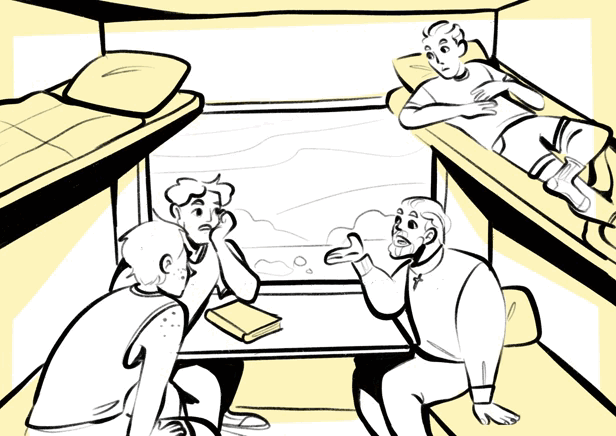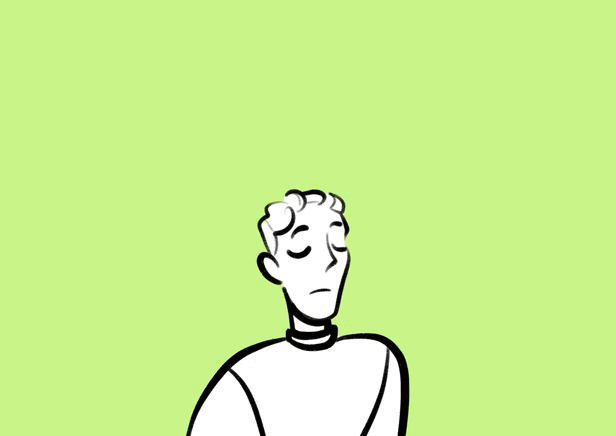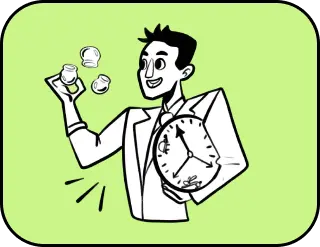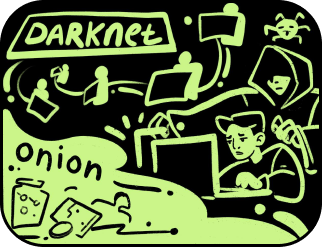How to become a ghost-catcher: techniques and modern tools
“Mystery is always attractive” — the character of Mathieu Kassovitz in the romantic comedy «Amélie» utters this sacramental phrase in the address of a lovely stranger. And, indeed, it can be applied to any other field: to idle curiosity of those reading the gutter press, to the burning interest of the crowd to all kinds of magicians’ exposures, to a deep, driving desire of neighbors to reveal all the details of the quarrels behind the wall, to teenagers tirelessly experimenting with their hair colours, tattoo and body piercing.
But the most magnetic remains one mystery, underexplored, unveiled, — the ghosts! Even the most rational and reasonable among us have felt someone’s close, unseen presence at least once. Then they, certainly, warded off this delusion: “Well, no, I just imagined this. It was a draught. Or a cat running past. Or just sounds from the window.” Or, perhaps, they didn’t. Maybe they – on the contrary – dug deeper into the history of this question, began to observe, read on the subjects of phantoms and ghosts. And then they just dealt with the situation, what to do: scare evil spirits away or search for the guru of a spiritualistic session relying on word-of-mouth, if it’s not the vermin, but the dead grandmother’s spirit. What if it spills the beans about legacy!
All this talk of ghosts is not going to become outdated, titillating and intriguing for millennia, — and that’s what the art speaks eloquently about. «The Canterville Ghost», «Haunted House», «The Phantom of the Opera», «Casper», «Karlsson» (the best motorized ghost ever) and the series of novels of «Harry Potter», familiar to all. And that’s just a few amongst the most replicated that sprang to our mind!
Anyway, the question of how to establish contact with the ghost or, in contrast, exorcise it, remains open. So we traditionally suggest to consider this problem from two different angles: from the point of view of empirical experience accumulated by dozens of generations and the scientific, rational one. Let’s go!
To begin with, who are ghosts exactly? The dictionary defines it like this:
“a ghost
noun, countable
the spirit of a dead person, or imaginary creature that a living person believes they can see or hear; usually dwells in castles and in cemeteries.”
Let’s model the situation, slightly reminding of the beginning of a joke («one day, a Russian, a German and an American find themselves together…») but instead of nationalities we’ll choose another classification. One day, a bookworm, an atheist (of scientific persuasion), an orthodox priest and a superstitious farmer from Braemar find themselves in a train compartment on the way from London to Brussel. By the third day all the traditional talking points have already run out: the family stories have been shared, the destinations have been discussed, the political news has been debated. And then the bookworm, leaving a book of sir Arthur Conan Doyle on the seats, went out for tea. A farmer, taking advantage of his absence, picked up that book which, quite by accident, opened at the chapter: «The Haunted Grange of Goresthorpe». Is it worth saying where the course of a lively conversation of fellow travelers has turned for the rest of their trip?
‘You are reading ’bout ghosts, is it captivating?’ the farmer began to question inquisitively a bookworm. ‘You know, I’ve seen plenty of them in our village. I’ve seen the great-grandmother on the fortieth day.’
‘On the fortieth day of what?’ a scientific atheist decided to clear things up just in case.
‘On the fortieth day after the funeral, I guess,’ the priest interjected on their conversation. ‘In Orthodoxy (and in some other creeds) 40 days after the death are considered an important phase for the soul of the deceased. The first three days after the death the soul stays near the body, that’s why the relatives usually say that they sensed the presence of the soul of the deceased.’
‘My grandpa couldn’t stand superstitions connected to commemoration,’ the bookworm put his word. ‘Literally went nuts hearing that «there should be no forks – the soul may prick». And that’s right! How can it do that, if it is disembodied, isn’t it? But bunches of hypochondriac female relatives finally insisted on spoons at the wake. When I was laying the table and serving these very spoons, they fell off the table at least thrice. Two times, I recall, I picked them up and thought: «Is it you, grandpa? You don’t agree, right?» And after that the third one dropped. I went to the kitchen, shared it with the family and there was general agreement that the soul of grandfather was against these spoons, so we decided that there should be forks.’
‘The parishioners of the Church tell so many such stories. About the first three days after the death and about forty. This is because from 3rd to 9th day the soul is shown paradise, and from 9th to 40th – hell. And only after the 40th day the soul goes where it remains to stay until the Last Judgment.’
‘So I saw it exactly on the 40th day,’ went on our rural aborigine. ‘The wake was almost over, and suddenly I heard the window pane slamming. And I do remember that I have closed it, I am on my way to check it – and, of course, it is open, the curtains are fluttering out, and granny sits on a chair. So peaceful, so quiet. I squinted, couldn’t believe my eyes, then opened my eyes – and she had already disappeared.’
‘Specifically here, in this book,’ the bookworm shook Conan Doyle’s volume, ‘there is no such thing. It is really more like just a gothic horror story. But actually, it is written so much about them! When I was a teenager, I was very interested in it. And I must say, that the pieces of literature are so different, but there are some similarities: the souls which continue to be somewhere here – the ghosts, the phantoms – they all died a strange death. Severely, tragically, undeservedly, restlessly. Why look far for examples? We are all coevals here, remember «Harry Potter»? I mean, the Hogwarts castle literally teemed with ghosts: Nearly Headless Nick, Moaning Myrtle, their own ghost for each house. When I read the first books, I was wondering: why they exactly? Why doesn’t every wizard become a ghost after all? And I got the explanation later: ghosts are the ones who didn’t realize their deaths, didn’t see who had killed them, how it had happened at all.’
‘And I liked Casper in my childhood,’ – the farmer confessed. ‘And he confirms this very theory as well. Was sledding all day long, got sick and died, and an inventor-father couldn’t undergo the death of his son and kept trying to resurrect his body. But he failed, and Casper became a ghost. And what do you think?’ – he turned towards a heretofore silent atheist.
‘In fact, I am a militant rationalist. I mean, I am actively against everything that doesn’t fit into a scientific outlook. Although the subject of your discussion is not that it doesn’t fit at all. One day, when I was in the attic of one intellectual summer house, I stumbled upon the filing of the journal. Not «Science and Life», of course, but something like that. I found a diverted paper there: the author spent a lot of time with dying elderly in hospices. And he noticed that just minutes before their demise the old people started to look as if through him and talk to someone non-existent. Within the context it became clear that almost all of them saw their predeceased relatives in their last moments. After discovering that, he began to observe more intently and one day he also saw a visitor from the beyond, but in what way! He paid attention to the detectors of life support devices going wild and creating not just chaotic lines, and beheld a human silhouette… That journal was pretty respectable, scientific, not about something paranormal, so from then on I have been interested in phantoms, treating them without irony or skepticism.’
‘Well, tell us, what does modern science think about this? You were the only one who remained silent until now.’
Right here the first solution is interrupted, because a scientific atheist and his associates enter the picture to demonstrate…

Modern science has long since ceased to ignore things it had been scoffing derisively on before, because the arsenals are expanding, so it is necessary to explain the inexplicable. Even things whose existence was simply denied.
Based on the three-part structure, ghosts are the intermediate, medium form between living and non-living. If we transfer on this structure the representation of life in our digital 21st century, we can identify three levels of reality: objective, augmented and virtual ones. And at every of these levels there are their proper phantoms which the technologies help to interact with.
Objective reality is most closely connected to traditional scientific research. And this is how we are formed – everything materially supported seems more understandable, accessible and steady. The adepts of gnoseology nearly unanimously report that it is essential to check the area for ghosts using some special equipment: the more abundant the set, the better it is. And if at least one (even better if several ones) device detects something – that’s when we have to initiate more serious studies.
The arsenal of a modern ghost-buster is no longer confined to a backpack with a vacuum cleaner sticking out of it (here comes a victorious OST GostBusters, did you hear the sound of it?) That’s what is offered to use:
1. The thermal imager. Well, that one is easy: the ghost is powered by energy and takes it from a surrounding medium. At this moment the air temperature drops. Robert Lawrence Stine, describing his «Headless Ghost», exults! If a cool temperature inside didn’t make you tremble, let’s continue our surveillance.
2. Hygrometer. It is an indispensable thing if you look for the ghosts, because it is often mentioned that the appearance of phantoms coincides with the weather changes: before the storm or during a gush of wind. One way or another, all these episodes are associated with a sudden change in the humidity level. It turns out that Emily Bronte wasn’t speculative in her «Wuthering Heights»!
3. Night vision camera. A classic device in the arsenal of each ghostbuster: it reacts to movements and allows to record them even in total darkness. It is not that the world literature is overflowing with references to this device, but you can notice it in «Paranormal Activity 5».
4. An electromagnetic field meter. You need this one anyway, because the ghost sighting invariably affects this field. Any physician will prove it to you.
One might keep being ironic about this, if not breaking news about Tesla’s cars cameras detecting phantoms. Not in a literal sense, naturally, but that was the conclusion of the owners of expensive electric cars who, not without surprise, have uncovered some uninvited guests captured by video-recorder: the onboard computer of the vehicle, parked near the graveyard, finds something identified as people, and this is under condition there are no people nearby. But for scientific debates, traditionally, there are two opposite takeaways.
1. The Rise of the Machines is just around the corner, because the neural network has recognized something that a human cannot recognize.
2. Artificial Intelligence is far from a human one, because the ghost is incorporeal and there is no need to assign material properties (such as ability to be a source of light) to it.
Oh yes, there is the third takeaway for the most suspicious: marketing experts and Tesla are the guru and geniuses of advertisement.
Virtual reality has its own spirits too – the so-called «digital ghosts». This is not quite the subject of our conversation, but we are not going to bypass it. In fairness, the digital ghost is also a ghost.
To put it in a nutshell, digital ghosts are the entire spectrum of virtual prints of a person, preserved and existing even after his or her death. Undeleted accounts and profiles, inactive documents and abandoned e-mail addresses, non-active players and characters of the computer games (gamers even have some special virtual memorials) fall into this category. The main difference between digital ghosts and «ordinary» ones (if we may, of course, call such unexplored phenomena ordinary) – no one denies and doubts their existence. The similarity is that they both are difficult to reveal sometimes.
At the same time, virtual reality doesn’t exist disconnected from the real world, that’s why the attempts to use it for installing contact with spirits are also known. Spirit radar, ghost hunting tools, ghost detector radar – all these are apps for searching for ghosts. Judging by the description, they are not much of an innovation, they are based on the same scheme as the person without a smartphone armed with dozens of detectors of all sorts. Meanwhile all the developers, regrettably, don’t provide a guarantee that activity recorded by these apps (electromagnetic field change, auditory noise, infrared radiation) is definitely connected to the presence of phantoms at home.
Augmented reality has not yet demonstrated tools for the phantom chasing except those generated by itself. And we need to comment on AR itself here. The fact is that AR in a broad sense is not only a modern technology, implemented by smartphones, game consoles and VR-glasses, but also an optical illusion, created using glass and mirrors at the end of 15th century in the European Renaissance Era. The brightest example of this «antique-style augmented reality» is the magic trick of Giambattista della Porta. The scientist created glass, one side of which is mirror-like, and another one is transparent and polished to invisibility. If you look through this glass in the right sidebar and in the right light, you can see something that is behind this glass and something that is reflected in it at the same time. And if you put a statue behind the glass, it will look like a shimmering ghost standing behind the viewer’s back.
For ghost-hunting, the augmented reality in its modern form offers some games. For example, «Ghostbusters: Afterlife ScARe» immerses us into the world of ghost-busters, familiar from childhood. Probably, it is explained by the specificity of AR: it models its own unique universe making the outer reality more coloured, counterintuitive and fascinating. It becomes enclosed in itself, giving the opportunity to find what is missing in real life. Then why should we arm ourselves with thermal imagers and night vision cameras, if we can easily find a ghost for every taste just by putting on right VR-glasses or downloading the necessary application?
The truth is that the Law of Accelerating History has not been canceled, and some things, which were described in science-fiction until recently, today are an intrinsic part of our life. So who knows, maybe in 5 years we, suspecting a ghost being in our home, will not seek help from fortune tellers and mediums, but put on our AR-glasses and, by activating the desired program, just meet all our intangible dear guests.

Linear-arithmetic synthesis is based on sound formation. We’ve synthesized the perfect formula of facts and interest.
Thank you!




